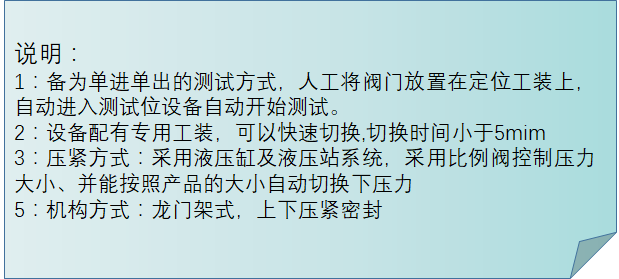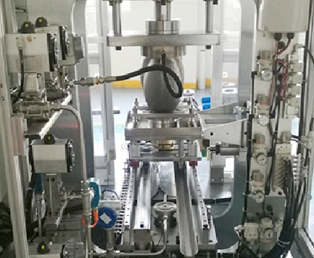 English
English Español
Español  Português
Português  русский
русский  Français
Français  日本語
日本語  Deutsch
Deutsch  tiếng Việt
tiếng Việt  Italiano
Italiano  Nederlands
Nederlands  ภาษาไทย
ภาษาไทย  Polski
Polski  한국어
한국어  Svenska
Svenska  magyar
magyar  Malay
Malay  বাংলা ভাষার
বাংলা ভাষার  Dansk
Dansk  Suomi
Suomi  हिन्दी
हिन्दी  Pilipino
Pilipino  Türkçe
Türkçe  Gaeilge
Gaeilge  العربية
العربية  Indonesia
Indonesia  Norsk
Norsk  تمل
تمل  český
český  ελληνικά
ελληνικά  український
український  Javanese
Javanese  فارسی
فارسی  தமிழ்
தமிழ்  తెలుగు
తెలుగు  नेपाली
नेपाली  Burmese
Burmese  български
български  ລາວ
ລາວ  Latine
Latine  Қазақша
Қазақша  Euskal
Euskal  Azərbaycan
Azərbaycan  Slovenský jazyk
Slovenský jazyk  Македонски
Македонски  Lietuvos
Lietuvos  Eesti Keel
Eesti Keel  Română
Română  Slovenski
Slovenski  मराठी
मराठी  Srpski језик
Srpski језик
Suzhou Beate trap gantry frame type water pressure testing machine
2024-09-02
Steam trap hydraulic test machine is a device used to test the water pressure of the steam trap.
This kind of test machine can usually simulate different water pressure conditions to test the seal performance and pressure resistance of the trap under different pressures. It can help ensure that the trap will work properly in actual use, preventing leaks and failures.
A trap water pressure tester may have the following features and functions:
1. Precise pressure control: can accurately adjust and control the test pressure.
2. Safety protection: With overvoltage protection, emergency shutdown and other safety functions.
3. Data recording and analysis: The pressure data during the test can be recorded for analysis and evaluation.
4. Multiple test modes: different types of water pressure tests can be carried out, such as pressure test, seal test, etc.
5. Easy to operate: The operation interface is simple and intuitive, convenient for operators to use.
When using the trap water pressure test machine, need to pay attention to the following points:
1. Strictly follow the operation rules to ensure safety.
2. Maintain and calibrate the test machine regularly to ensure the accuracy of the test results.
3. Select the appropriate test pressure and test time, and test according to the specifications and requirements of the trap.
4. Carefully analyze the test results to determine whether the trap is qualified.

The test principle of the steam trap water pressure testing machine is mainly to simulate the pressure environment of the steam trap in actual work. By applying a certain water pressure to the steam trap, it detects its sealing performance, pressure resistance and various performance performances under pressure, as follows:
1. Principle of pressure application and maintenance:
Pressurization method: The test machine usually uses a booster pump and other devices to produce high-pressure water. For example, pneumatic liquid booster pumps can raise the pressure of water to the required pressure value for testing. During the test, the booster pump continuously works to gradually increase the pressure of the water to the set test pressure.
Pressure maintenance: When the water pressure reaches the set value, the test system will maintain the stability of the pressure through various control devices (such as valves, pressure sensors, etc.). The pressure sensor monitors the water pressure in real time, and once the pressure drops, the control system automatically starts the booster pump to replenish the pressure, ensuring that the pressure is maintained within the set range throughout the test.
2. Sealing performance detection principle: pressure maintenance: When the water pressure reaches the set value, the test system will maintain the stability of the pressure through various control devices (such as valves, pressure sensors, etc.). The pressure sensor monitors the water pressure in real time, and once the pressure drops, the control system automatically starts the booster pump to replenish the pressure, ensuring that the pressure is maintained within the set range throughout the test.


Static seal test: During the test, install the trap on the test station of the test machine, close the inlet and outlet channel of the trap, and then fill the inside of the trap with water and apply pressure. If the trap seal performance is good, the pressure should remain stable during the specified test time, and there will be no significant pressure drop. If the pressure drops beyond the allowed range, it means that the trap pressure is maintained: when the water pressure reaches the set value, the test system will maintain the pressure stability through various control devices (such as valves, pressure sensors, etc.). The pressure sensor monitors the water pressure in real time, and once the pressure drops, the control system automatically starts the booster pump to replenish the pressure, ensuring that the pressure is maintained within the set range throughout the test. The problem of bad or lax sealing may be caused by the defect of the sealing surface between the disc and the seat, the improper installation of the sealing ring and other reasons.
Dynamic seal testing: For some traps that need to be switched on and off frequently during operation, dynamic seal testing is also required. In the test process, the actual working state of the trap is simulated, and the trap is constantly opened and closed, while keeping the water pressure stable, to observe whether the seal performance of the trap is good and whether there will be leakage during the switching operation.
3. Principle of pressure resistance test:
Ultimate pressure test: Gradually increase the water pressure until it reaches the limit pressure that the trap can bear, and observe whether the trap is broken, deformed or otherwise damaged. In this way, the pressure limit of the trap can be determined, which provides a basis for the selection and use of the trap.
Pressure fluctuation test: In the test process, simulate the pressure fluctuation that may occur in actual work, such as sudden pressure increase or decrease, and observe the performance of the trap in the process of pressure change. This verifies the structural strength and stability of the trap, as well as its reliability in complex pressure environments.




